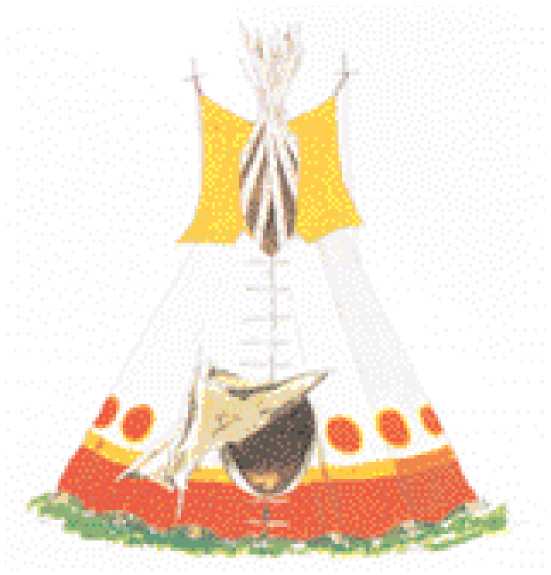As few as six or as many as 28 buffalo skins were sewn together to make a tipi covering, depending on the size of the pelts and the size of the structure. Although men provided the materials for tipis, cutting the pine trees for poles as well as hunting the buffalos, women usually erected them.
According to tribal custom, either three or four poles were used as the basic framework. They were tied together near the top and raised with the bottoms at equal distances, forming a cone shape. Then other poles were propped against them. The final pole set in place served to hoist the sewn buffalo skins. This covering was

Plains Indian tipi

Stretched around the framework and held in place around the bottom edge with wooden pegs or stones, and along the front seam with wooden lodge pins. Part of the front seam was left unfastened to serve as an entrance with closable flaps. An opening was left at the top to serve as a smokehole.
Tipis were practical in that the various openings could be adjusted for ventilation, as the bottom edge could be rolled up to allow for increased air flow. When completely sealed, with extra pelts added to the walls for insulation and a fire inside, the tipis were warm in wintry weather. Native Americans situated them in such a way as to reduce the wind factor. Because of prevailing westerly winds on the wide-open plains, the entrance faced eastward. And the tipis leaned slightly to the east so air could more easily flow over the top, thus decreasing wind pressure on the structure.
Plains Indians thought of tipis as more than just homes. They considered them sacred places, with the floor symbolizing the earth and the walls the sky. Moreover, the base of the tipi was in the shape of a circle, a sacred symbol for Plains Indians, indicating how all aspects of existence were interconnected. Every tipi had a small altar of stone or earth where incense was burned during prayers. Both the outside walls and inner linings were commonly painted with symbolic designs. Brightly colored figures and shapes referred to spirit beings,
Ancestors, family histories, and honors gained in battle. Others were for decoration.




 World History
World History








